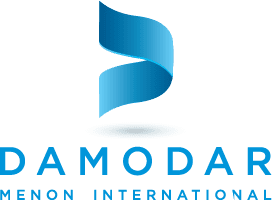When it comes to making garments, there are various types of fabrics to choose from. Before you make your decision, it’s essential to understand whether you need to approach knitted fabric manufacturers in India or woven fabric manufacturers. Knits and woven fabrics are two different types of textiles that are primarily used in dressmaking. Although they have similarities, they differ in terms of raw material, production process, characteristics, and end-use.
What is a Knitted Fabric?
Knit fabrics, a staple in the production of various apparel by some of the top textile companies in India, are produced by interlocking loops from a single yarn using knitting machines. This method results in a fabric with a distinctive braided or looped appearance. Known for their softness, stretchiness, and flexibility, knit fabrics offer significant width-wise (horizontal) stretch, offering comfortable movement. However, the stretch is somewhat constrained lengthwise (vertical).
A range of garments is made from knitted fabrics, including T-shirts, sweaters, polo shirts, socks, and hosiery. Their elasticity and comfort make them particularly well-suited for casual or active wear. Additionally, the lightweight and breathable nature of knit fabrics makes them particularly suitable for warmer weather.
Key Characteristics of Knit Fabric:
Stretches Easily and Flexible: Exhibiting outstanding stretchability and flexibility, knit fabric enables easy movement and ensures a comfortable fit for the wearer.
Resists Wrinkles: The fabric’s inherent elasticity makes it less prone to wrinkling, allowing it to quickly recover its shape after being crumpled.
Soft and Comfortable: Renowned for its soft and comfortable texture, knit fabric offers a pleasant feel against the skin, enhancing the overall wearing experience.
Wide Applications: Widely employed in various projects, knit fabric finds application in casual clothing and accessories such as hats and scarves, showcasing its versatility.
Breathable: Notably more air-permeable than woven fabrics, knit fabrics feature a structure that incorporates ample air space through the interlacement of loops, improving breathability.
As a leading marketplace for top textile companies in India, DMI contributes significantly to the production and trading of knit fabric applications.
What is a Woven Fabric
In contrast to knit fabrics, woven fabrics are created by interlacing multiple yarns at right angles, forming a crisscross pattern that results in a more structured and enduring fabric. These fabrics, produced using various types of looms—whether handloom or power loom—are known for their durability.
Woven fabrics exhibit less stretch and flexibility compared to knits, with a typical tendency to stretch along their width.
This stretch is often added by incorporating lycra or spandex yarn in the weft direction and occasionally in the lengthwise direction, creating bi-stretch fabrics.
When woven with 100% cotton yarn, the fabric displays minimal stretch along both the length and width directions, making them well-suited for garments demanding stability and shape retention. This makes woven fabrics a preferred choice for the creation of tailored clothes, formalwear, bed and linen, and home decor items.
Key Characteristics of Woven Fabrics
Long-Lasting: Popular for their tensile and tear strength, woven fabrics are celebrated for their durability, making them suitable for daily casual and work wear. This durability is particularly appealing to cotton buyers seeking long-lasting materials.
Solid Structure and Stable: The tightly interlaced yarn structure imparts greater stability to woven fabrics, rendering them ideal for apparel that requires a more tailored and polished appearance.
Stretches Less: In contrast to knit fabrics, woven fabrics offer minimal stretch, offering a more fitted and structured silhouette.
Easily Wrinkles: Woven fabrics tend to be more prone to wrinkling, therefore requiring proper care and ironing to maintain a smooth and polished appearance.
Have Better Aesthetics: Woven fabrics showcase an extensive array of aesthetic properties, including solid colors, intricate patterns, and unique textures. These characteristics make them the preferred choice for modern fashion designing projects, appealing to cotton buyers and fashion stylists with a liking for design versatility.
There are a few simple tests you can perform to identify whether a fabric is woven or knitted before placing a bulk order online. They include starch tests, visual inspection of the fabric surface, wrinkle tests, and edge examinations.
Hope this helps you to trade better online at TEXchange Global. DMI, through its versatile trading platform, offers B2B businesses the ability to buy and sell cotton fabric online in India faster, transparently, and globally. For more details, connect with us via email, phone, or social media.
